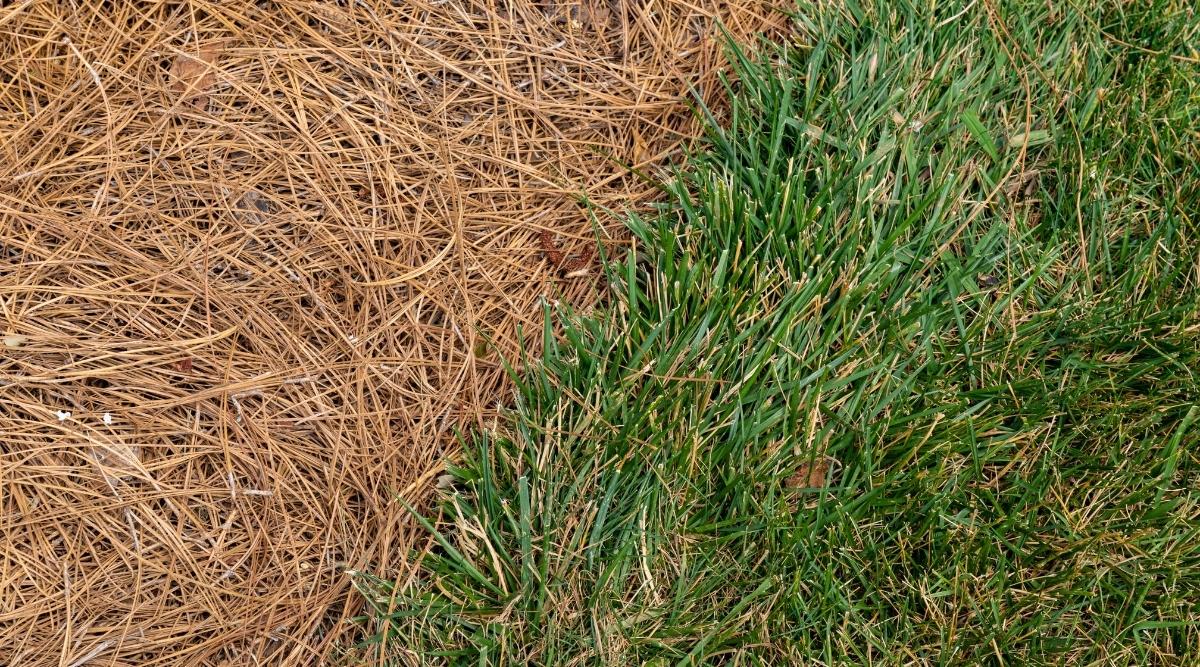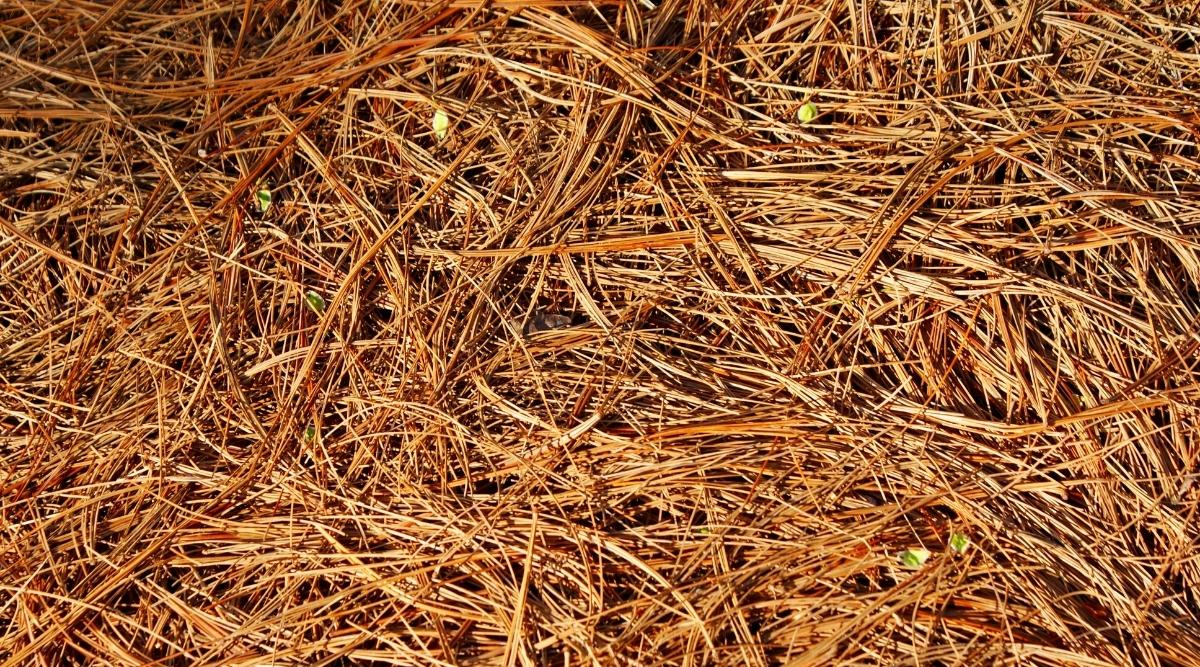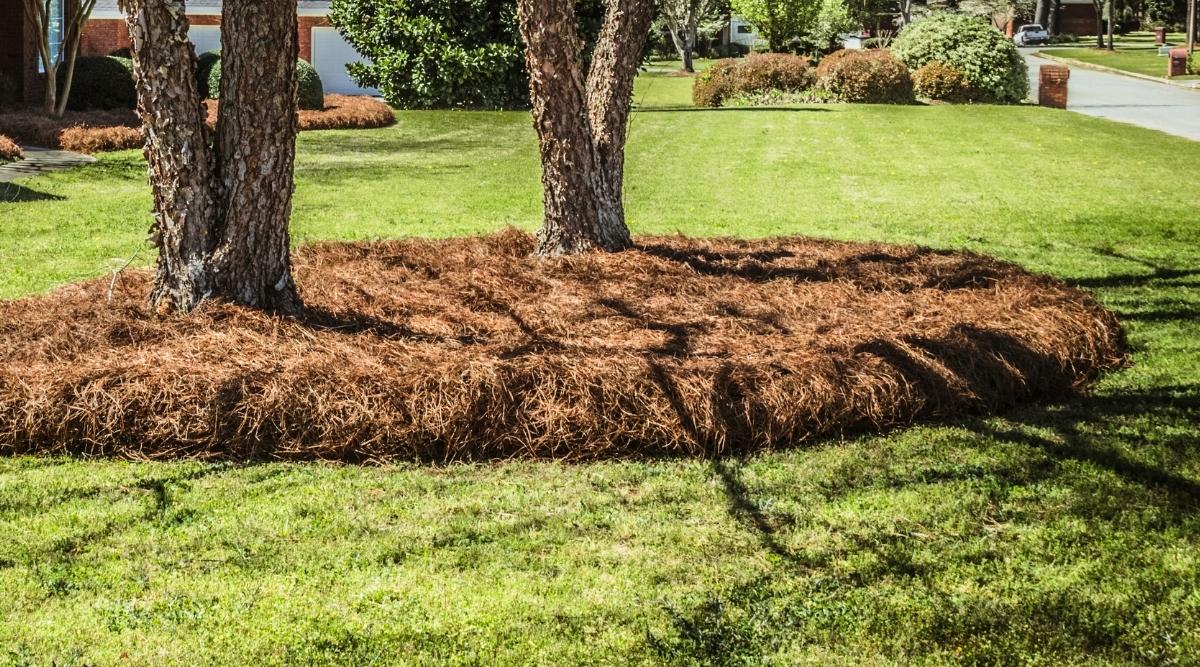Do Termites Like Pine Straw Mulch? Should You Use It?
Thinking of adding some pine straw mulch to your yard but want to be sure that termites aren't going to make themselves at home in your yard when you do? Pine straw can be tricky to add, and maintain. But it's also a very popular option used by many homeowners. In this article, we take a look at what you can expect when it comes to termites and pine straw.

Pine straw is one of the most popular mulches in the US. Its eco-friendly nature, amazing use for landscaping and rustic autumn feel make it a staple for every garden. It smells great. It can also act as both a mulch and weather barrier for plants as they grow.
However, if you’re thinking of buying a sack or two right now, hold on for just a few seconds. Know that some bugs love this mulch as much as we do. But what about termites?
While pine straw is definitely more resistant to termites, it’s not completely repellant against them. That’s why it’s important to understand the risks of using this type of mulch around your home before you start using it. Let’s take a look and find out what you can expect from termites when you introduce this popular mulch to your yard.
What’s Pine Straw Mulch?

When it comes to mulches, pine straw is a popular choice for homeowners. There are many reasons why this treatment is so popular, on top of the fact that, well, it just smells good. But what is it, and where does it come from?
Pine straw mulch comes from pine needles. These are dead needles that fall from pine trees. And since producers don’t need to cut down trees to get them, this mulch is considered eco-friendly.
Homeowners use pine needles to protect soil from erosion and to regulate its temperature. This mulch is mostly placed on slopes and hills because its needles interlock and keep the soil from eroding away.
Benefits

Pine straw has a lot of benefits. It doesn’t dry rot, it smells great, and there are several different advantages to using it, so let’s take a look at them, and figure out if it’s the right fit for your home or yard.
Grows Well With Certain Plants
A lot of shrubs, flowers and other plants grow well with this type of mulch. Some examples of these wonderful plants are azaleas, camellias, hydrangeas, magnolias, snapdragons and geraniums. It can look quite good in your yard, but also act as a bit of a mulch, or barrier while these plants both grow and bloom when they are in-season.
Protects Against Weather
Pine straw helps protect your yard against the cold weather. A 6-inch thick blanket of the mulch can guard tree and plant roots from the cold. (Note that this may attract termites due to the depth.) You’ll have to weigh the cost of having this mulch in your yard versus the termite potential with the depth of material needed to insulate your plants.
Surpresses Weeds
Like any other mulch, it can suppress weeds from germinating. It prevents sunlight from ever reaching the soil underneath, so infant weeds won’t have a chance at growing. This can be helpful around the base of your plants, in flowerbeds, and even in areas where some edging might be present to keep weeds off your grass and walkway areas.
Great For Windy Conditions
This mulch is great for places with strong winds. Because the needles interlock, they won’t get blown away like ordinary leaves. They act as a mulch and will stay in place compared to other mulch types because they typically stay in place.
Water Resistant
It doesn’t get washed away either. Quite the contrary, these needles absorb rainwater, and they keep it locked away in the soil without threat from evaporation and drying out. This helps to keep certain areas dry, and can help prevent overwatering.
Great For High Traffic Areas
It’s great for foot traffic like in play areas. Pine straw is extremely durable and can withstand plenty of abuse. The needles rarely break and can be very good to protect the ground where kids play, and people walk around.
Low Cellulose Count
And finally, according to Nola.com, this mulch has a very low cellulose count. This means that it’s termite resistant. Technically, it’s a myth to think that pine straw is completely termite-resistant.
So, Do Termites Like Pine Straw?

Speaking of termites, does this mean that pine straw is never in their dinner plans? Technically speaking, this mulch is only “resistant” to termites because there’s still a chance that these insects will eventually eat and live under it. There’s probably a higher risk of getting termites in your straw bed due to it being outdoors than termites infesting bamboo inside your home if you don’t already have an infestation.
It’s not actually the needles themselves that can invite termites. Like cypress mulch and as we mentioned previously, this mulch absorbs and holds water. It keeps the soil under it very moist. Termites love moisture. Subterranean termites, in particular, thrive in moist soil.
This also doesn’t mean that termites won’t eat it. In fact, a study from the Journal of Agriculture from the University of Florida pitted different mulches against each other. And it found out that when push comes to shove, pine straw, like any other mulch, does get eaten by subterranean termites.
But luckily, it is more resistant to those pesky insects. Compared to eucalyptus, pine sapwood and pine bark, pine straw doesn’t get that much. You can look at how the other mulches performed here.
Utilizing in Your Yard
So how do you keep pine straw when you know it will still attract termites?
When it comes to using this popular mulch, it’s really just about placement. Where and how you put the mulch affects your yard and your house. If you put it in the wrong corner, it can easily just become a busy hub for insects. And if you put it too thick, that’s also equally bad.
Here’s what you should do instead:
- Don’t let the mulch touch your house.
- Stop the mulch line at least 1-2 feet away from the foundation.
- Make a barrier between the mulch and the house.
- Pea gravel is a good option for this.
- 6-inches of mulch may help your plants from the cold.
- But it will also make an attractive spot for termites.
- Instead, cover the ground with 2-3 inches of mulch.
- Choose long or standard length pine needles.
- The heavier and longer those needles are, the better they interlock.
So technically, the thought that termites prefer this type of mulch is just not true. It’s somewhat termite-resistant. But they will eat it when they don’t have enough food.
Wrap Up
Termite repellant garden accessories don’t mean that they can keep these insects out forever, but that doesn’t mean you can’t do anything about it. Termite treatments work with mulches, so you can keep the attractive landscape and none of the awful bugs.
If you are looking for a low-maintenance mulch that’s termite resistant, pine straw is an excellent option. Just understand that it’s not termite-proof, and there are still risks to consider when using it around your home.
Share this post
Save time and money on pest control
Subscribe to expert DIY pest control tips, pest control product reviews and information.




